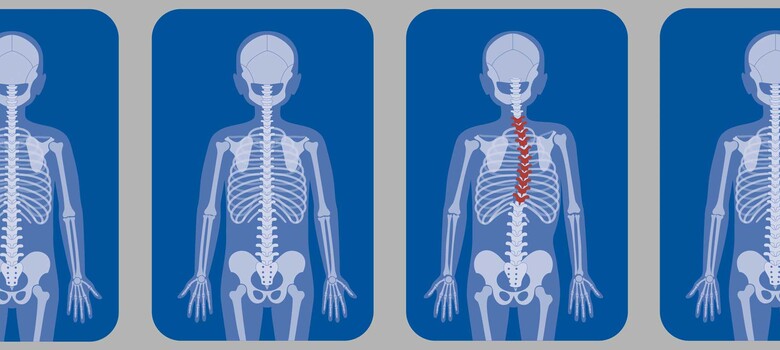 From the DukeHealth.org archives. Content may be out of date.
From the DukeHealth.org archives. Content may be out of date.
Can Adults Develop Scoliosis? Seven Facts to Know

Scoliosis is not just for kids. Many adults develop scoliosis, and live with it for many years without even knowing they have it. Others keep it at bay with regular exercise and healthy living. However, surgery may be necessary when painful, debilitating symptoms exist. As co-director of Duke’s Spine Center, Sergio Mendoza, MD, advises adults with scoliosis on which treatment is right for them. Here, he addresses the facts you need to know about adult scoliosis.
There Are Two Types of Adult Scoliosis
One starts in adolescence and progresses in adulthood. The other develops in adulthood and is related to osteoarthritis and spinal degeneration.
Most People with Adult Scoliosis Have No Symptoms
X-rays find a curved spine in 70% of adults over age 60; 20% present with curves greater than 20 degrees. Painful symptoms are less common. Special X-ray technology called EOS can be used to diagnose scoliosis in adults and children. It reduces radiation exposure 50% to 85% compared with traditional X-rays.
See a Doctor When Adult Scoliosis Causes Pain and Gradual Deformity
If you have back, leg or nerve pain, balance problems, notice a change in the symmetry of your shoulders, or experience progressive height loss, you should see a doctor. “Scoliosis is easier to treat early, before there is a dramatic curve to the spine,” said Dr. Sergio Mendoza Lattes, MD, an orthopaedic spine surgeon at Duke.
Exercise Helps
Physical therapy, cardiovascular exercise, and core-strengthening exercises like yoga and Pilates can alleviate some scoliosis symptoms.
Scoliosis Surgery May Be Necessary
When non-surgical treatments such as non-steroidal anti-inflammatory drugs and physical therapy are ineffective, minimally invasive or open surgery may be necessary to correct spinal curves that cause persistent pain. During the procedure, spine surgeons realign the spine and prevent the curve from worsening using rods and screws, by removing arthritic joints, or by cutting and fusing vertebrae into a corrected position. Choosing the right approach depends on “the characteristics of the curve, the patient’s age, and how well prepared they are for surgery,” Mendoza said.
Spinal Cord Monitoring Makes Surgery Safer
Protecting the spinal cord, central and peripheral nervous systems during surgery is paramount. Duke’s spinal OR team includes electrophysiologists who monitor the spinal cord through electrical impulses that are transmitted from the brain to the arms and legs during surgery. “This major advancement has made surgery much safer,” Mendoza said.
Pre-Surgery Rehab May Hasten Recovery
A full recovery following spinal surgery can take as long as six months. Duke is one of the only spine centers in the country to study whether pre-rehabilitation, which focuses on improving heart and lung function before surgery, will help people recover faster and with less complications. Mendoza said, “It will take five years to prove it, but people who comply with the recommendations consistently tell us they feel better.”



